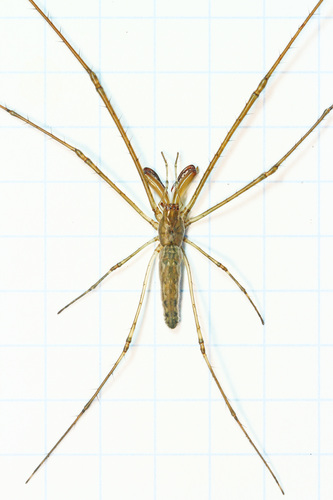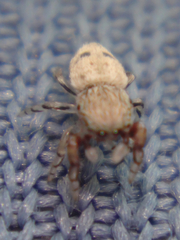Tetragnatha

Tetragnatha is a fascinating genus within the order Arachnida, commonly known as stretch spiders due to their elongated bodies and legs. They are part of the family Tetragnathidae and are known for their unique web-building techniques and physical adaptations, which allow them to thrive in diverse habitats, including those found in the Comunidad Valenciana.
Characteristics:
- Body Shape: Tetragnatha spiders are distinguished by their long, slender bodies and legs, which give them an excellent ability to camouflage among their surroundings, such as grass and foliage.
- Coloration: Their coloration ranges from silvery-grey to golden brown, which provides an effective blend with the natural environment, enhancing their stealth and predatory success.
- Adaptations: One of their remarkable adaptations is the capability to hold their legs parallel to their body, minimizing shadow and making them less visible to predators.
Habitat:
- Tetragnatha species are commonly found near bodies of water, such as rivers, lakes, and wetlands, where they can benefit from the high insect activity for feeding.
- They are also seen in gardens, forests, and grasslands throughout the Comunidad Valenciana, taking advantage of the diverse ecological zones.
Web-building:
- These spiders spin orb-shaped webs, often with reduced or no stabilimentum (the zigzag patterns present in some spider webs), which are typically positioned horizontally or obliquely.
- They often suspended their webs over water or vegetation, maximizing their chances of capturing flying insects.
Behavior:
- Tetragnatha spiders exhibit unusual mating behaviors, where the male uses his long chelicerae to interlock with the female's, ensuring copulation while minimizing the risk of being cannibalized.
- They are generally non-aggressive towards humans and play a beneficial role in controlling insect populations.
Tetragnatha spiders are an integral part of the Valencian ecosystem, helping to maintain the balance of insect populations and adding to the region's rich biodiversity.







